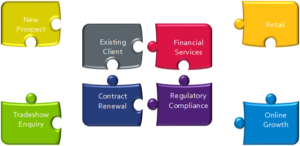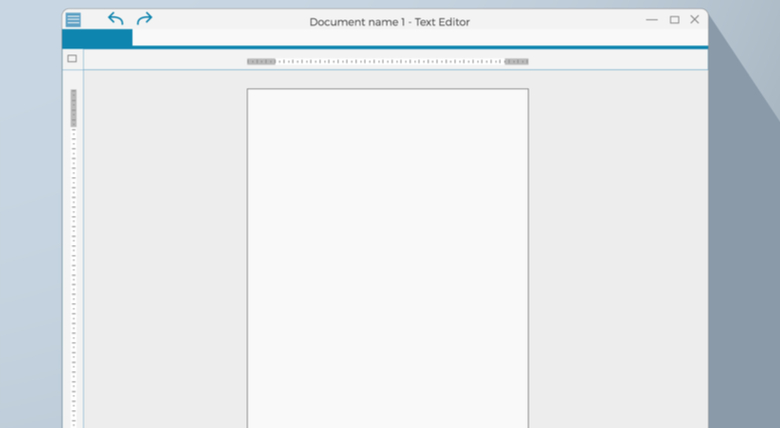Show me your current template.
That’s usually one of my first requests when helping organizations unleash the real power of their proposal automation system. But “template” means different things to different people. For some, it is the Microsoft Word template (file extension .dotx) with all the themes, styles, colors and page settings. For others, it’s a starter document with a basic structure of headings and placeholders. Sometimes, it’s a multipage document with every piece of boilerplate crammed in “just in case we need it.”
To misquote a famous film: “Do not try to create a proposal template, that’s impossible. Instead, only try to realize the truth … there is no template.”
Love them or loathe them, every proposal starts with some sort of template. The problem is, any attempt to create a one-size-fits-all document will inevitably fail to account for the individual characteristics of the prospect. Instead, it will lead you into the trap of focusing on you, your brand, your product and your achievements.
A truly useful template needs to be dynamic, predictive and, above all, tailored for the audience. That means you need content — lots of different versions of content. A version for every customer type, market, need, desired outcome and available solution. If you like, a matrix of contextual fragments to dynamically build a story onto a persuasive framework. How, you ask?
I am often challenged by those who think you can’t successfully automate proposals because it is “just boilerplate.” That’s why I advocate developing blended content — pre-written yet personalized content prepared for a specific context and designed to flow seamlessly into a cohesive story. In an article I co-authored with Steve Coles, CPP APMP, “How to Personalise, Contextualise and Legitimise Automated Proposals,” it says, “If content is king, then context is queen. Blended content must be generic enough to be applied confidently in a variety of proposal use cases, but it needs to feel specific enough that it resonates with the reader.”
Some people may doubt the value of a content library, but according to Strategic Proposals’ white paper “Winning with Pre-written Content,” “the proposal teams that manage pre-written content brilliantly win more business than those who neglect this critical area.” The report says that of the top 5% performing proposal organizations, more than 90% have a strong library of evidence such as case studies, etc., as well as a comprehensive library of reusable content.
Yet we can go further than just having a comprehensive library of content and evidence that’s up-to-date and owned by subject-matter experts. Using the power of proposal automation, we can build a more accurate template by inserting the most applicable version of the content for a specific scenario. To do that, we need to ask some intelligent questions.
Imagine you work in a coffee shop. Each customer has an individual requirement for their beverage based on size, type, flavor, style, temperature, sweetness and milk option. You can establish a customer’s order by asking a set of questions such as:
- Do they want small, medium or large?
- Tea, coffee, chocolate or juice?
- Hot, cold or blended with ice?
The order taker combines the answers into a suitable coffee shop style drink such as a large caramel latte, extra hot, no whip, to-go. This is then crafted into a physical product by the barista.
The same principle applies to an advanced automated proposal template. We ask simple questions about the prospect, use the answers to assemble the right ingredients, then combine the ingredients to complete the recipe. For example, one of our questions might ask if we are proposing to a new prospect or an existing customer. The answer tells us whether to use content written for an audience that knows us, likes us (hopefully) and has their own experience with us. This would be different from the content written for someone who might need more information about who we are and for whom we need to demonstrate evidence from our other customers.
Scale that up and it’s easy to see how the resulting templates will differ. An existing customer in financial services approaching their renewal date who needs to ensure compliance in a demanding regulatory environment is different from a new prospect in retail who we met at a tradeshow and is interested in expanding online sales.

Blended content fits together like a jigsaw puzzle where each piece can be replaced by another to change the picture, as long as it has the right shape to fit the puzzle.
This is where your blended content fits in. For the above examples, you would have individual fragments of content for an existing customer, a new prospect, a contract renewal, a tradeshow enquiry, and your experience, case studies and solutions for financial services, retail, regulatory compliance and e-commerce. Each fragment should start and finish with the segue text that picks up on the theme from the fragment before and hands over to the next piece.
In fact, just a few audience personas from several target markets combined with a handful of potential needs and matched with a few dozen desired outcomes, all tuned by sales context, delivers thousands of available propositions. The limits are endless, and it’s perfectly possible to achieve 50 million possible proposal templates from just a few hundred pieces of blended content. There is no proposal template when you have millions of them.
Darrell Woodward is a freelance bid manager and award-winning innovator in proposal automation. He believes in unleashing the full power of intelligent automation to efficiently deliver personalized, tailored and persuasively structured proposals at scale. He loves drinking coffee, watching sci-fi movies and is proud to be a bid geek.



Join the Conversation